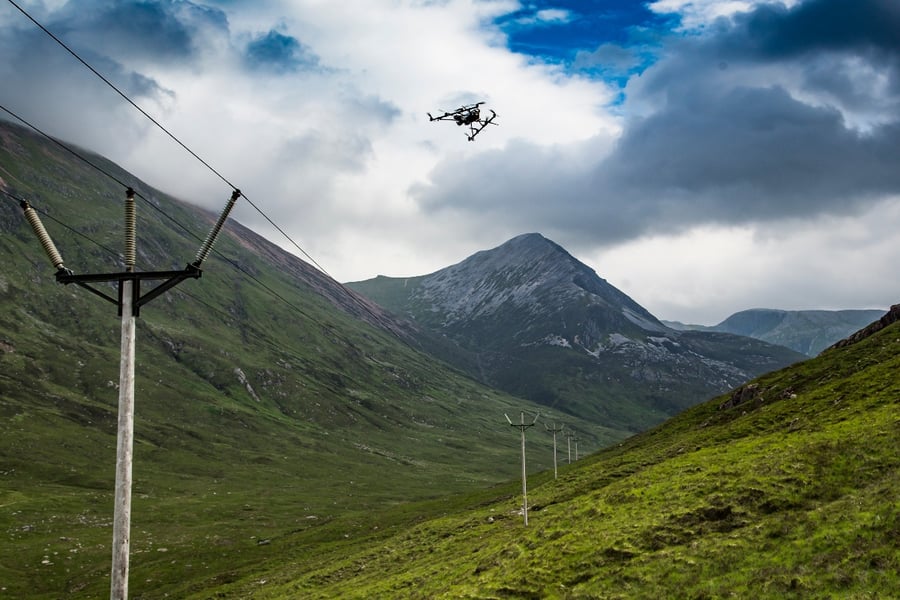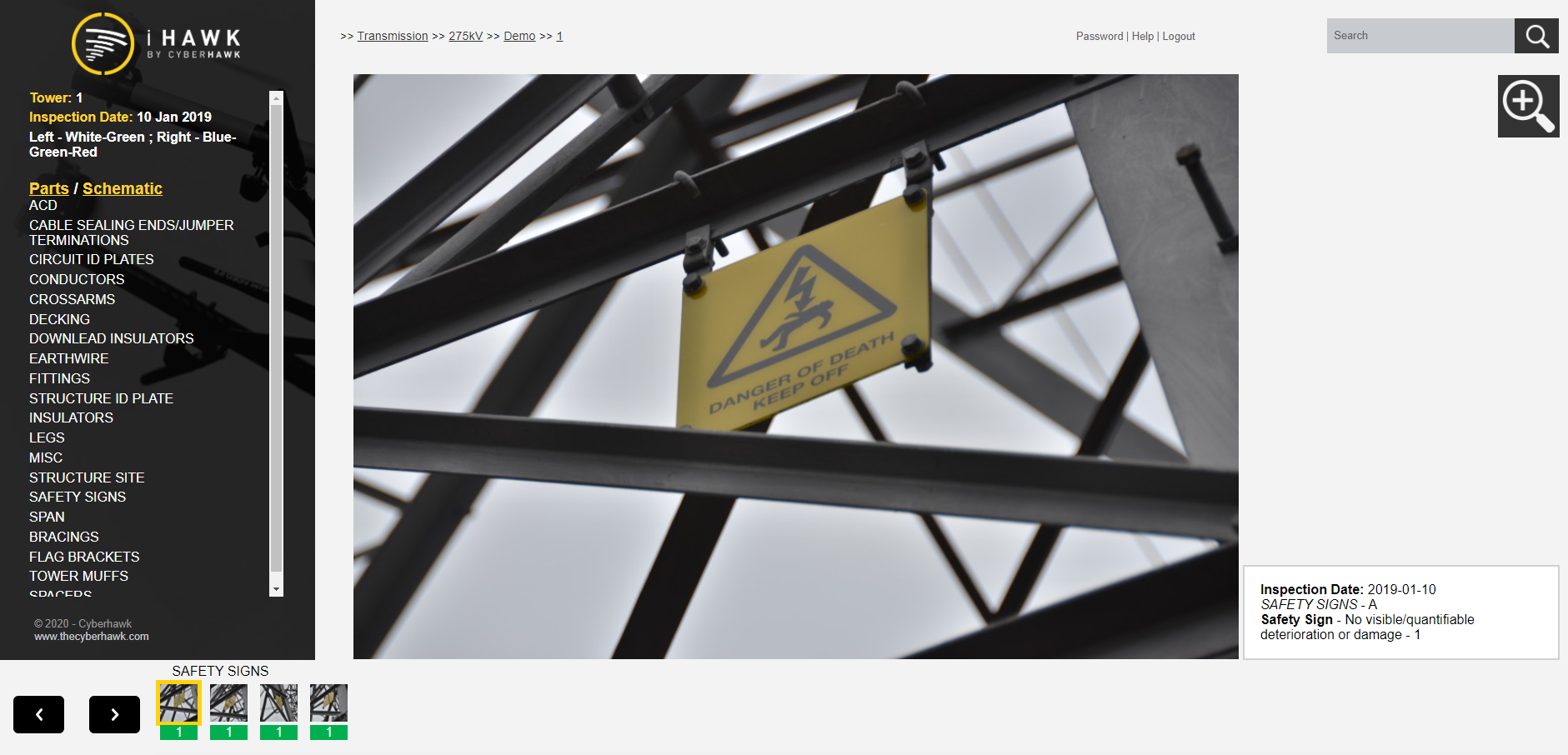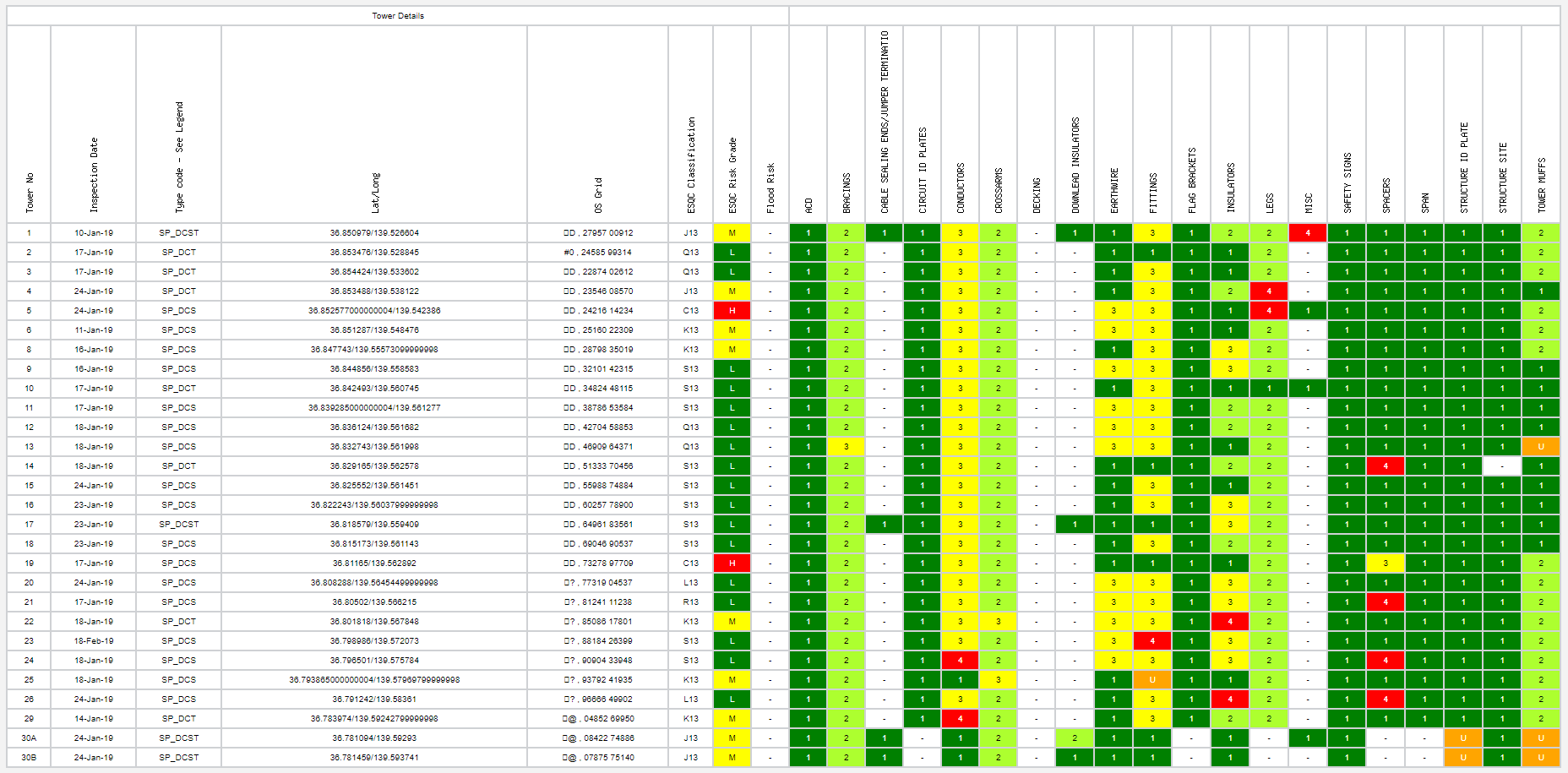Overview:
In this blog, we consider how Cyberhawk’s rigorous approach to planning and a raft of well-developed operational procedures help to mitigate risk during drone inspections of large-scale power networks.
.jpg?width=888&name=DSC04322(1).jpg)
Drone inspection of power grid infrastructure is a relatively low risk activity compared to having someone climb a tower or using a helicopter to do the same task. However, low risk doesn’t mean no risk, so the logistical, planning and operational procedures developed by Cyberhawk are unusually demanding for a drone operator – and would not be out of place in a manned aviation company.
When it comes to preparing for a major power network inspection, there is much work to do before any kit goes airborne. At Cyberhawk, rigorous campaign preparation falls into four key areas: logistical planning, risk assessment, agreeing a method statement and developing a systematic data-gathering plan.
- Logistical planning
The very first thing to establish is whether it’s legal to fly in the locality. As different procedures and flight permissions are required in different countries around the world, Cyberhawk’s Aviation Advisor will always make sure that operations can legally take place in that country first. Additionally, the right to roam freely cross-country changes from country to country, therefore permission from landowners is also a careful procedure.

Secondly, the team needs to understand the terrain. If it’s extremely mountainous or totally inhospitable, then it will require different planning strategies to get people in there. There needs to be clarity on what the terrain is like and how the team is going to get from the base of one tower to the next. Is there suitable road access? Are there river crossings? Is the land use conducive to travel along the line of the power infrastructure? All these questions and many more will be raised and discussed, where necessary with the power network client, to establish just how easy or how difficult it will be to access the assets.
- Risk assessment
Having established that the work can be done legally, and that every tower is physically accessible if necessary, then the next step is to carry out a risk assessment. Depending on the country and the local environment, this may cover a wide range of potential risks from low flying aircraft and protecting local endangered species through to equipping personnel against possible bears or snake attacks.

Adjacent buildings or activities also need to be reviewed. For example, is the inspection site close to a school or a secure facility, are there any farm animals in the area, do the vehicles need to be cleaned or disinfected? In fact, anything that can add to the operational risk will influence how and when the inspection is done, and how long it will take to complete.
Often in this type of work, risks can present themselves at any point. Our field teams are trained to react and respond accordingly when a risk becomes present and people-safety is always at the core of every job.
If you’re interested in finding out how iHawk can support your project
download your free power grid capabilities overview pack now!
- Method statement
Once the risk assessment is complete, the next step is to pull all the information into a plan for the team to follow. This step-by-step method statement will detail how the inspection team is physically going to do the task, but will also include information on any regional or cultural differences the team is likely to encounter in the field – such as local attitudes to access on private land to ensure that an appropriate approach is taken with the landowner.
Importantly, because all power network structures are not of the same design, the method statement will also incorporate the tower drawings to ensure that the team knows where they need to be positioned to collect the inspection data and images required, whilst always maintaining drone visibility. And if, for example, the tower is a new design, then the method statement might identify the need for training prior to kick-off to ensure that the team captures the data efficiently.
- Data gathering plan
Finally, to ensure maximum value can be extracted from the data via iHawk, Cyberhawk’s cloud-based visualization software, it is critical that the inspection teams understand how the data is to be gathered in the first place.

The most important thing when collecting inspection data is the way it is structured and saved. If data is collected in a haphazard way, then it becomes difficult to use effectively. Cyberhawk has a rigorous process in place to ensure the data is captured, stored and saved in the same way for every asset. This ensures that when it comes to analysis, the engineers can easily compare like for like across assets. It also ensures that the data can later be analyzed using AI or machine learning to extract even greater value and insights.
Across these four areas, the Cyberhawk support team completes all the planning tasks and then briefs the team. But ultimately, out in the field, it is the pilot and inspector who need to make the final decision on whether or not it is safe to fly. So they are trained and briefed to perform active risk assessments to ensure that their drone operation remains safe at all times, while also delivering a successful power network inspection campaign just as planned.
If you’re interested in finding out how iHawk can support your project
download your free power grid capabilities overview pack now!
